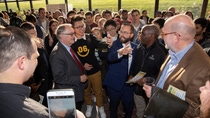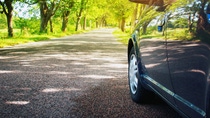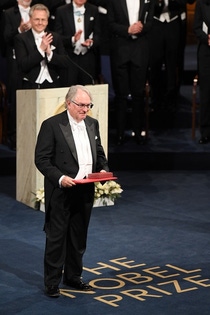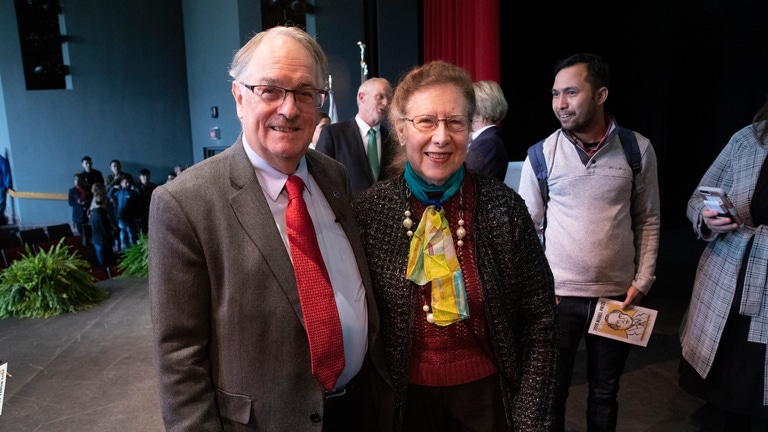BASF: Congratulations on your prestigious award. You are the key figure in the history of the development of lithium-ion batteries, as well as the founding father of rechargeable lithium-ion batteries. Could you take us to the very beginning—how did you get interested in chemistry and rechargeable batteries?
M. Stanley Whittingham: I got interested in chemistry through two, what you would call, high school teachers. I was at Stamford School in England. I had a good chemistry teacher, a very good physics teacher, and they got me totally committed to chemistry and physics. Then I went to Oxford and studied chemistry. Afterwards, I went to Stanford—at that time Ford Motor Co. had just made the discovery of a material that conducted sodium ions almost as fast as liquid solutions. We said “Hey, maybe we can do something at room temperature.” All the lithium and sodium batteries at that time were about 300, 400-degrees centigrade. When I moved on to the workforce, there was interest in superconductors using intercalation reactions to change the superconducting transition temperature, and I was making some of these from just aqueous solutions. There was a lot of heat evolved, so I said “Hey, we can harness the heat,” so that’s when we started getting into batteries. My company just started up a corporate lab so they could become an energy company, not just a petroleum and chemicals company. We were told to work on anything energy-related, provided it wasn’t petroleum and chemicals.
Clearly, sustainability came into focus much later in our society, do you think you were ahead of your time with fossil-fuel-free energy technology?
Yes and no. In the end, we were ahead of our time in my work, the oil industry thought oil production was going to peak about the year 2000. They were already planning on having to diversify beyond just oil. My company was interested in batteries at the time, fuel cells and solar cells. It did all the nuclear reprocessing for the U.S.
Initially used in electronics—I’ll call them toys or phones, computers, etcetera—batteries showed enablers how to have a much cleaner environment, get away from dirty diesel engines and to go to more hybrid or even all-electric. Batteries enable wind and solar farms as well, and they are beginning to dominate in that field. I think lithium ions will help us maybe get the climate change under control a bit more.
Could you share some of the challenges of working with efficient batteries? Did they initially catch fire?
No, we didn’t have too many issues. Initially, we did everything on the lab bench. We were bought glove boxes. Then the engineering team got a dry room. There were no fire issues with batteries, whilst they were operating. The issues arose only when the batteries were pulled apart for postmortems. In the dry room, they’d sometimes catch fire because they had finely divided lithium in them—that was the big issue. Otherwise, we didn’t have any fire issues in the lab.
How did you end up collaborating with Dr. John Goodenough—one of the other 2019 Chemistry laureates for battery materials?
I met him in the early 1980s at Oxford once when my wife and I went over there—we all had tea together at Randolph Hotel. We published our work on titanium disulfide. John was looking at the magnetic properties of the lithium cobalt oxide. He added two and two together and said: “Lithium cobalt oxide is the same structure as lithium titanium disulfide—I’m going to try and use it as a battery.” And that’s how he got into cobalt oxide batteries.
An interesting side to all this—I was English and made my invention in the U.S. While John was an American and made his invention in England. But there was no direct interaction between our group and his group at the time, just as there was no direct interaction between our Exxon group and the Japanese group (under Akira Yoshino).
Afterwards, I’ve worked with John on and off. We both ran a big symposium for the American Chemical Society in New York City. We have a book that came out of that collaboration. We are now partners in the large Battery500 consortium, so we’re probably working closer together today than we ever have in the past. My work on battery materials was in the 1970s, John’s was really in the 1980s and shortly after our Japanese colleague Akira developed the anode (1985). I came up with the intercalation concept—the idea. John came up with the cathode to make it economically viable; then Akira came up with the anode and built a battery in which Sony took an interest—since that was the company that licensed the battery at the end.
You’ve obviously accomplished some amazing goals. What word of advice would you give to young chemists or STEM graduates entering the workforce?
I keep telling graduate students—you have to do what excites you. Don’t do it for the money; and be willing to take risks and make some mistakes. If you don’t take risks, you won’t make any major breakthroughs. But if you take risks—you can get some things wrong. You’ve got to take those risks and plow ahead and believe in what you’re doing.
You married a fellow professor. Does your wife share your interest in lithium-ion batteries?
Yes and no. She says they’re double-edged swords. She teaches languages and literature. She says the students are always trying to look at their phones instead of listening to her. She’s excited about it though (lithium ions).
After winning the most prestigious award in Chemistry, what’s next for you? Is there something you look forward to working on now?
First, I have to get both feet on the ground. I’m still working on Battery500, they’re still doing a lot of battery research in Binghamton. The state—within the last three years—has put several million dollars into my group. We have our own dry room and a small pouch cell prototype manufacturing line. I’ve got lots of excited graduate students and postdocs. As long as my health holds up, I will keep going—and my doctor tells me not to retire.



